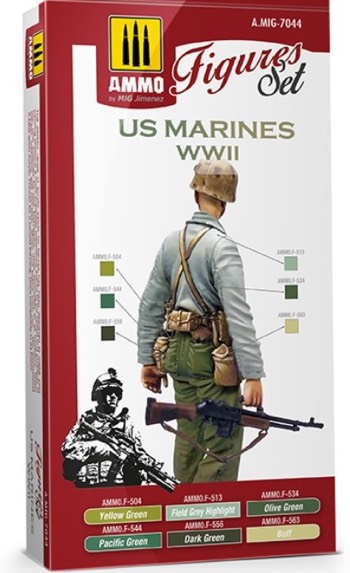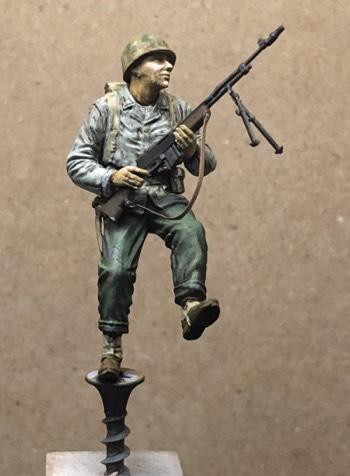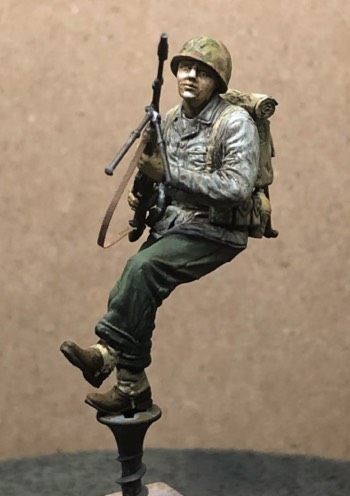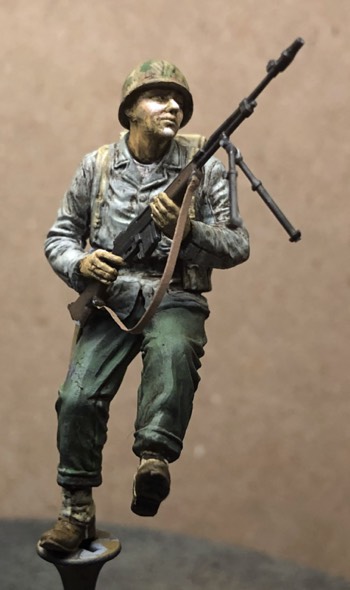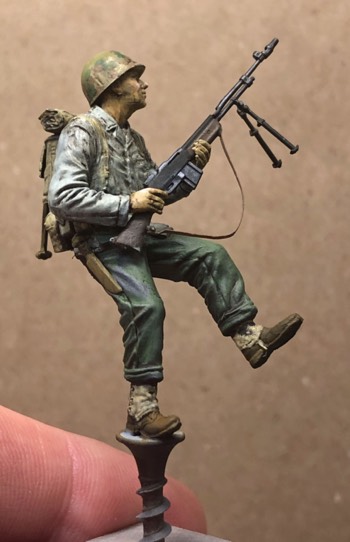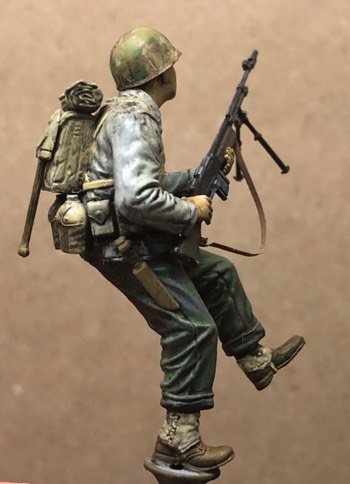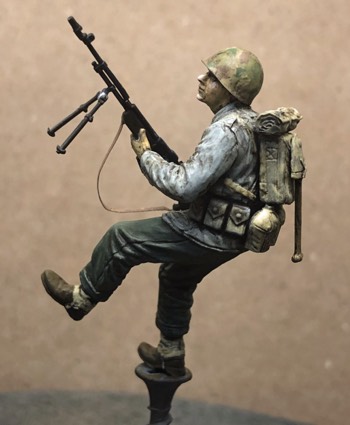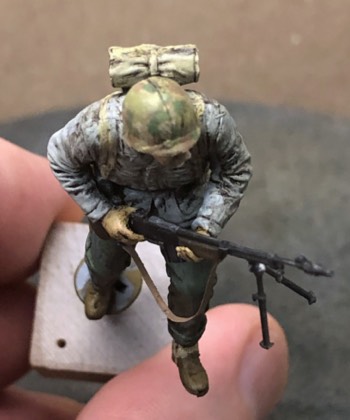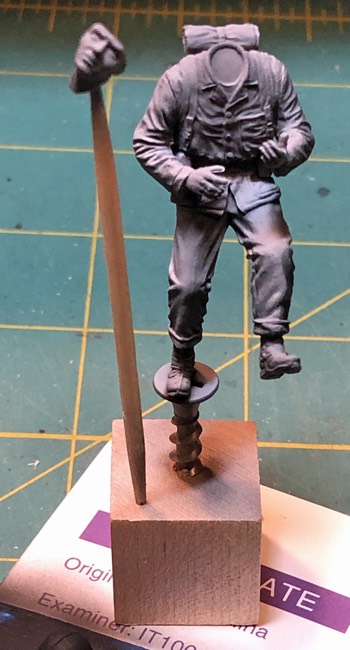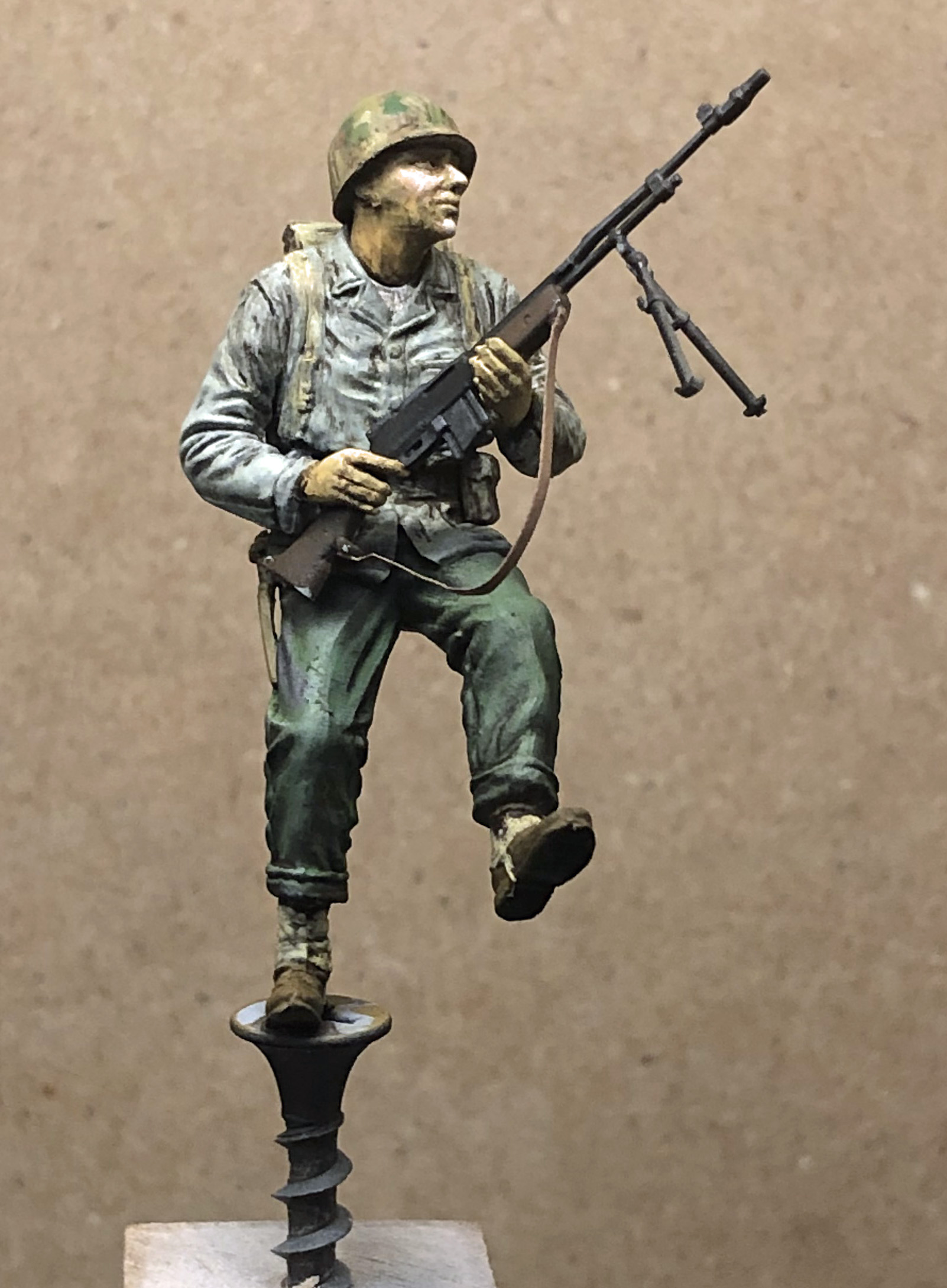
Reviews
Tools
US Marines WWII Figures Acrylic Paint Set
by Eric Christianson
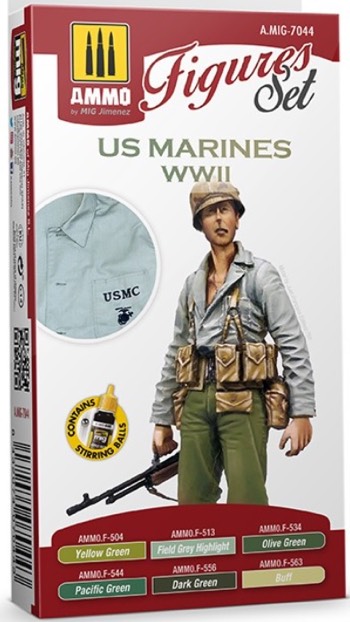 Model: US Marines WWII Figures Acrylic Paint Set
Model: US Marines WWII Figures Acrylic Paint Set
Reviewed by: Eric Christianson, IPMS # 42218
Scale: N/A
Company: Ammo Mig
Price: $15.01
Product/Stock #: A.MIG-7044
Website: Ammo by Mig
Product Web Page: View
The AMMO range of acrylic paints for figures has recently been expanded to include another new set of paints specifically designed for the US Marines in the Pacific Theater, the subject of this review.
Opening the box reveals a set of six industry-standard 17ml. ‘eyedropper’ style bottles of high-quality acrylic paint from their Ammo-Mig line, each containing a ‘stirring ball’ (a BB-sized steel ball to help mix the paint when shaking). The assumption is that the paint set would serve as a one-stop shop for producing the USMC uniform that bears its name, a favorite for military figure painters and armor modelers alike.
(From the Manufacturer’s Website)
(US Marines WWII Figures Set) Includes the colors used to represent the distinctive greenish tones of the jacket and trousers used during the war. These colors have been selected through rigorous research to ensure accuracy when creating highlights, adding volume, and define details.
Includes the colors:
- AMMO.F-504 FIGURES PAINTS Yellow Green FS-34259
- AMMO.F-513 FIGURES PAINTS Field Grey Highlight FS-34414
- AMMO.F-534 FIGURES PAINTS Olive Green
- AMMO.F-544 FIGURES PAINTS Pacific Green
- AMMO.F-556 FIGURES PAINTS Dark Green
- AMMO.F-563 FIGURES PAINTS Buff
The AMMO range of acrylic paints for figures has been designed to make your painting sessions a more enjoyable experience thanks to the speed and simplicity of use. New materials for new techniques that are accessible to all modelers.
All of the colors in this series can be mixed with one another and with the full range of AMMO acrylics. This line of colors is perfect for the usual layering and blending techniques used in figure painting as well as the most recent mixed blending techniques. Formulated for maximum performance with both brush and airbrush. Water soluble, odorless, non-flammable and non-toxic.
My experience using these paints
First and foremost, I attach each figure to a wooden dowel or block for better handling, and I use good quality nylon/polyester brushes to apply the paint. I thin these paints using the manufacturer’s recommendation; A.Mig 2000 Acrylic Thinner [ACRYLIC THINNER (60 mL) - Ammo of Mig Jimenez - Acrylic colors].
I prime my figures with an acrylic flat black, and then dust them from above using an acrylic flat white to create a modulated effect under the paint to follow. Before I weather my figures, I coat them with an acrylic clear gloss to protect the paint from enamel washes and oil-based dry brushing. I finish each figure with a dead-flat coat using A.Mig 2050 Ultra-Matt Lucky Varnish [ULTRA-MATT LUCKY VARNISH - Ammo of Mig Jimenez - Acrylic colors].
Here are the steps I used to produce the figure in the images (Figure is from the Dragon 6554 ‘U.S. Marines Peleliu 1944’ figure kit):
- Primer (1) Rattlecan Acrylic Flat Black overall
- Primer (2) from above: Rattlecan Acrylic Flat White
- Pants – Ammo.F-544 Pacific Green, F-556 Dark Green, F-504 Yellow Green
- T-Shirt - Vallejo Model Color 70.921 White
- Tunic – Ammo.F-513 Field Grey Highlight, F-534 Olive Green
- Boots – Vallejo Model Color 70.921 English Uniform
- Web Gear and Puttees – Ammo.F-563 Buff
- Helmet – Mix of all six Ammo Mig colors in the set
- Skin – Vallejo Model Color 70.927/928/955 Flesh
Thinning Ratio (for glazing) is 1 drop paint, 4 drops thinner I clean my acrylic brushes with tap water.
Clean Up
Cleaning up Ammo paints is a breeze. These are true acrylics and clean up with tap water just fine. I will also draw my brushes through a cleaner/preserver cake once in a while to keep the bristles supple and the points true.
Conclusion
I am a big fan of Ammo paints, and I have been using them for several years now. The rich pigment has excellent coverage when brushed, and can be thinned to a point of near transparency for laying down thin layers of glaze. The range of their colors, and the use of a subject-orientated naming convention, greatly enhances the painting experience for military modelers.
I would like to heartily thank Ammo by Mig for providing these paints for review, and to IPMS USA for giving me the opportunity to use and review them.

